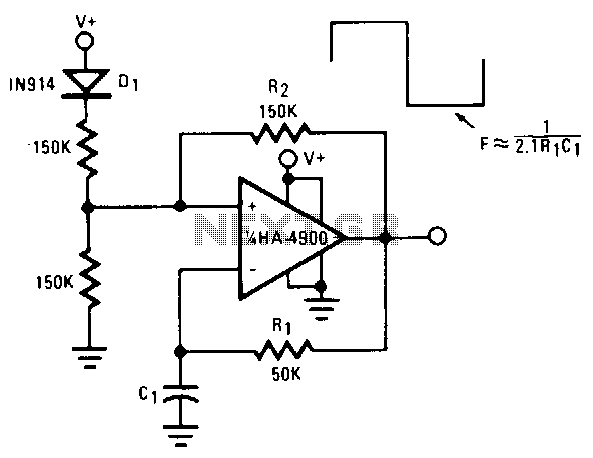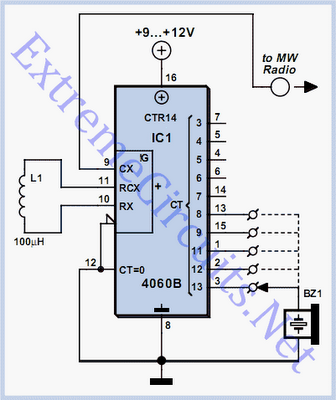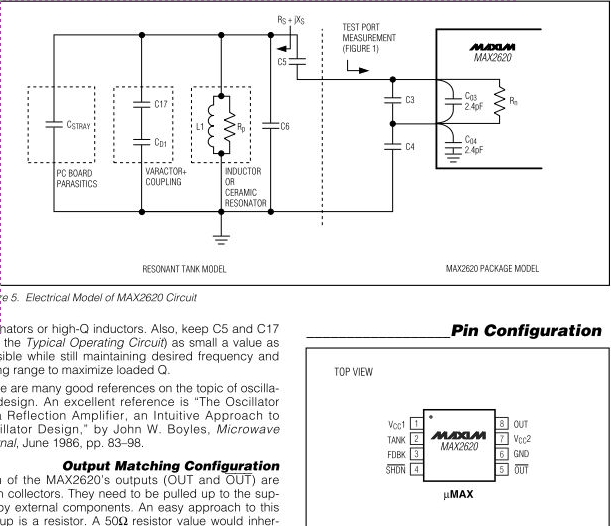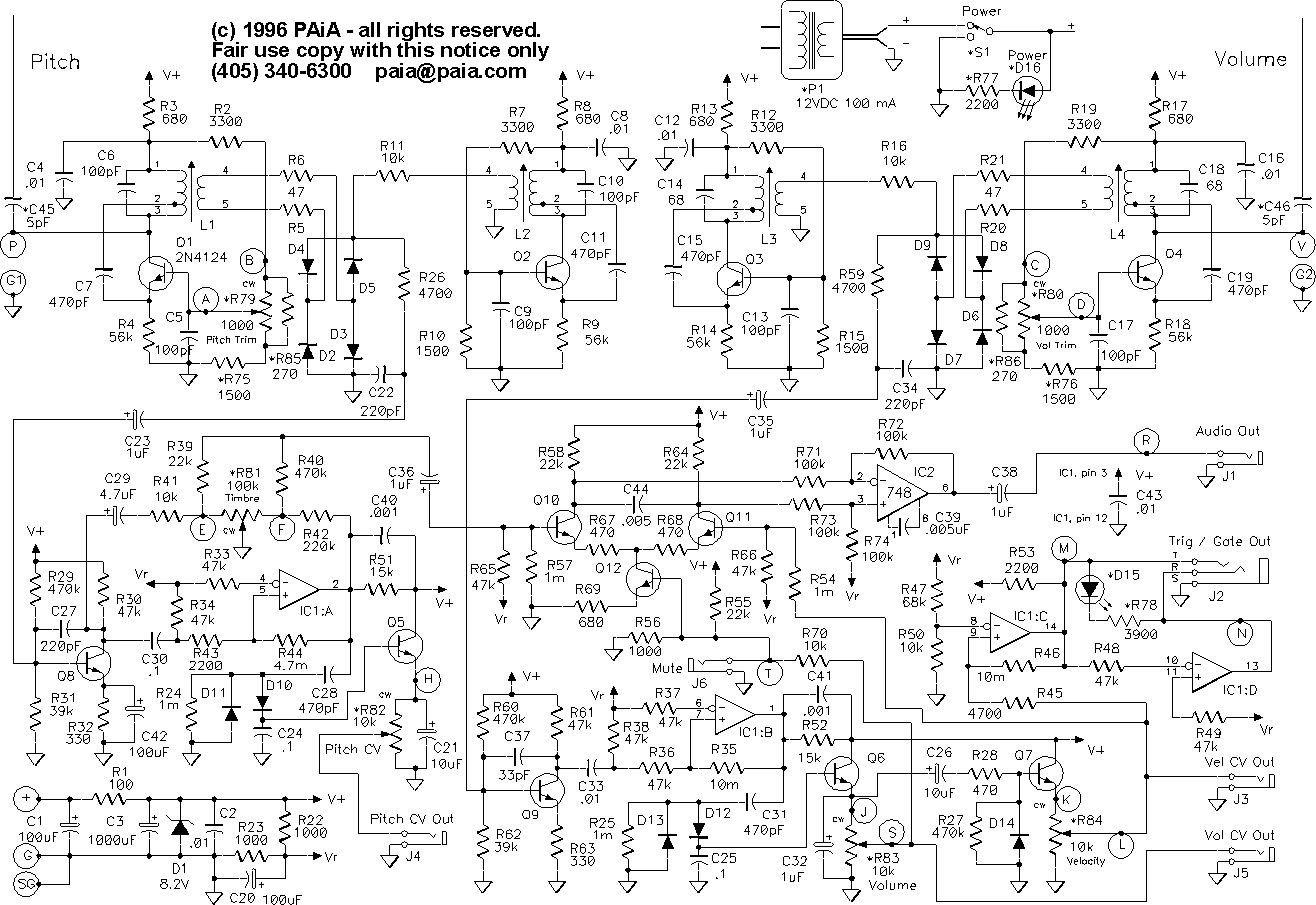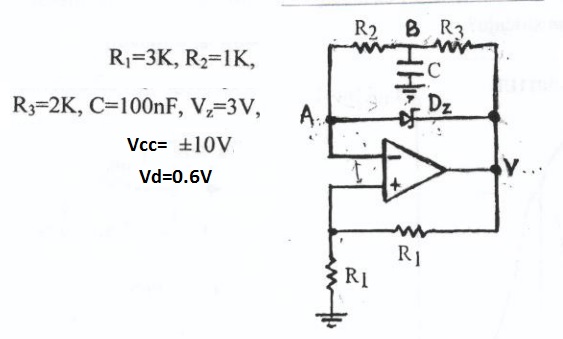
Wien-Bridge Oscillator
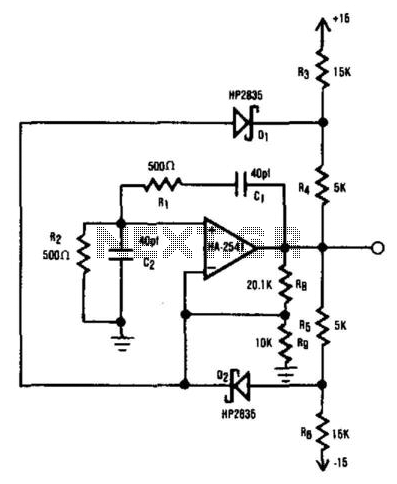
The HA2541 is ideal for use as the core component of an oscillator. Despite the basic diode limiting provided by R3 through R7 and D1 and D2, a high-quality sine wave at 40 MHz can be easily achieved, with an upper frequency limit of 50 MHz, surpassing the unity-gain bandwidth of the HA-2541. The components R1/C1 and R2/C2 deliver the necessary regenerative feedback for sufficient frequency stability. Theoretically, a gain of three is required from the feedback network to maintain oscillation; however, the practical gain needed is slightly over three, which is supplied by resistors R8 and R9.
The HA2541 oscillator circuit operates by utilizing a combination of resistive and capacitive components to generate and stabilize oscillations. The primary function of the HA2541 is to produce a sine wave output, and its design allows it to achieve frequencies up to 50 MHz effectively.
The circuit includes a feedback network formed by R1, C1, R2, and C2, which is critical for establishing the oscillation condition. The feedback network must provide a gain slightly above three to sustain oscillation. The gain is adjusted using the resistors R8 and R9, which fine-tune the feedback loop.
The diode limiting provided by D1 and D2, along with resistors R3 to R7, helps to shape the waveform, ensuring that the output remains within desired amplitude levels and prevents distortion. This diode limiting is essential for maintaining the integrity of the sine wave output, especially at higher frequencies.
The choice of components, particularly the values of R1, C1, R2, C2, R8, and R9, directly affects the frequency stability and quality of the output waveform. It is crucial to select these components carefully to optimize performance and achieve the desired frequency response.
Overall, the HA2541 oscillator circuit is a robust design suitable for applications requiring high-frequency sine wave generation, leveraging the capabilities of the HA2541 operational amplifier in conjunction with passive components to achieve reliable and stable oscillation. The HA2541 is well-suited for use as the heart of an oscillator. In spite of the rudimentary diode limiting that is provided by R3 through R7 and D1 and D2, a good-quality sine wave of 40 MHz is readily attainable with an upper limit of 50 MHz, which exceeds the unity-gain bandwidth of HA-2541. Rl/Cl and R2/C2 provide the required regenerative feedback needed for adequate frequency stability. In theory, the feedback network requires a gain of three to sustain oscillation. However, the practical gain needed is just over three and is provided by R8 and R9. 🔗 External reference
The HA2541 oscillator circuit operates by utilizing a combination of resistive and capacitive components to generate and stabilize oscillations. The primary function of the HA2541 is to produce a sine wave output, and its design allows it to achieve frequencies up to 50 MHz effectively.
The circuit includes a feedback network formed by R1, C1, R2, and C2, which is critical for establishing the oscillation condition. The feedback network must provide a gain slightly above three to sustain oscillation. The gain is adjusted using the resistors R8 and R9, which fine-tune the feedback loop.
The diode limiting provided by D1 and D2, along with resistors R3 to R7, helps to shape the waveform, ensuring that the output remains within desired amplitude levels and prevents distortion. This diode limiting is essential for maintaining the integrity of the sine wave output, especially at higher frequencies.
The choice of components, particularly the values of R1, C1, R2, C2, R8, and R9, directly affects the frequency stability and quality of the output waveform. It is crucial to select these components carefully to optimize performance and achieve the desired frequency response.
Overall, the HA2541 oscillator circuit is a robust design suitable for applications requiring high-frequency sine wave generation, leveraging the capabilities of the HA2541 operational amplifier in conjunction with passive components to achieve reliable and stable oscillation. The HA2541 is well-suited for use as the heart of an oscillator. In spite of the rudimentary diode limiting that is provided by R3 through R7 and D1 and D2, a good-quality sine wave of 40 MHz is readily attainable with an upper limit of 50 MHz, which exceeds the unity-gain bandwidth of HA-2541. Rl/Cl and R2/C2 provide the required regenerative feedback needed for adequate frequency stability. In theory, the feedback network requires a gain of three to sustain oscillation. However, the practical gain needed is just over three and is provided by R8 and R9. 🔗 External reference
Warning: include(partials/cookie-banner.php): Failed to open stream: Permission denied in /var/www/html/nextgr/view-circuit.php on line 713
Warning: include(): Failed opening 'partials/cookie-banner.php' for inclusion (include_path='.:/usr/share/php') in /var/www/html/nextgr/view-circuit.php on line 713

